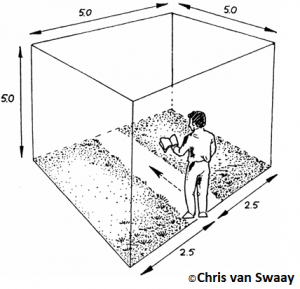Get Involved
Step 1: Get to know your bumblebees
You can find hints and tips about how to identify Irish bumblebees under the About bumblebees section of this site. Do you have one of our handy pocket guides? If not, you can buy them from our online shop. We also offer workshops where we teach bumblebees identification. To see if a workshop is coming to a place near you, the current list of workshops can be found in our News & Events section.
Step 2: Choose where you want to walk
This is the most important step! The key thing is that you enjoy participating in the project, so choose somewhere that is both enjoyable and convenient for you to walk. The route you choose should be 1-2 km in length or a distance you can comfortably complete in 40-60 minutes. A walk of this length ensures that the bumblebees you see are representative of the community in your area.
Step 3: Tell us about your route
We have an online recording system where you can set-up your walk (or ‘transect’). This only needs to be completed once. A brief tutorial on how to this is in our Downloads section. Alternatively, you can download, print out and fill in a Transect details form, post it to us at the address on the form and we’ll do the rest. If you’ve any problems or prefer we set-up the account for you, contact us here to help.
Step 4: Get out there and start monitoring bumblebees!
Never hesitate to email us with a photograph to check an identification – it’s a quick way to gain confidence in your identification skills. On average in any one location in Ireland there are 6-8 bumblebee species, so once you get to know the common species in your locality, learning the less common species becomes much easier. Keep an eye on our News & Events section for identification workshops and other events where you can get to meet new bumblebee and new bumblebee recorders.
Step 5: How to monitor bumblebees
Record bumblebees along your walk once a month from March to October. Avoid monitoring in consecutive weeks e.g. in the last week in April, then the 1st week in May. Ideally, leave at least a two-week gap between walks. The aim is to yield 8 relatively evenly spaced counts of the bumblebee community on your walk per year. You can enter your records into our online recording system.
Recording should be undertaken between 11:00 and 17:00.
Only record when weather conditions are suitable for bumblebee activity: at temperatures of at least 13°C or above, and at least 60% sunshine (e.g. when 60% of the sky is cloud free). When temperatures are 17°C or above, the % sunshine is no longer a constraint. The wind speed should be less then Beaufort scale 5 (small trees in leaf being to sway). Sometimes the Irish weather won’t allow you to walk a full set of 8 counts per year, but in our analyses at the end of each season a small number of missing values per walk can be estimated using other counts during the year.
Walk your transect at a slow and steady pace, counting all bumblebees you see within a fixed distance: 2.5 m either side, 5 m ahead and 5 m above. In some habitats, such as along sea cliffs or roadside verges, it is acceptable to record at a width of 5 m along one side only of the transect line. Always follow exactly the same route each time you record bumblebees along your transect.
Each time you walk our transect record the date, start time, finish time, average temperature, average wind speed on the Beaufort scale and average wind direction. For each section of your transect, record the bumblebee species and count of each species, as well as the % sunshine. You can simply note this down in a notebook as you walk along. The Beaufort wind scale is:
0 – smoke rises vertically
1 – slight smoke drift
2 – wind felt on face
3 – leaves in slight motion
4 – dust raised and small branches move
5 – small trees in leaf sway
6 – large branches move, trees sway and you shouldn’t be monitoring bumblebees!

